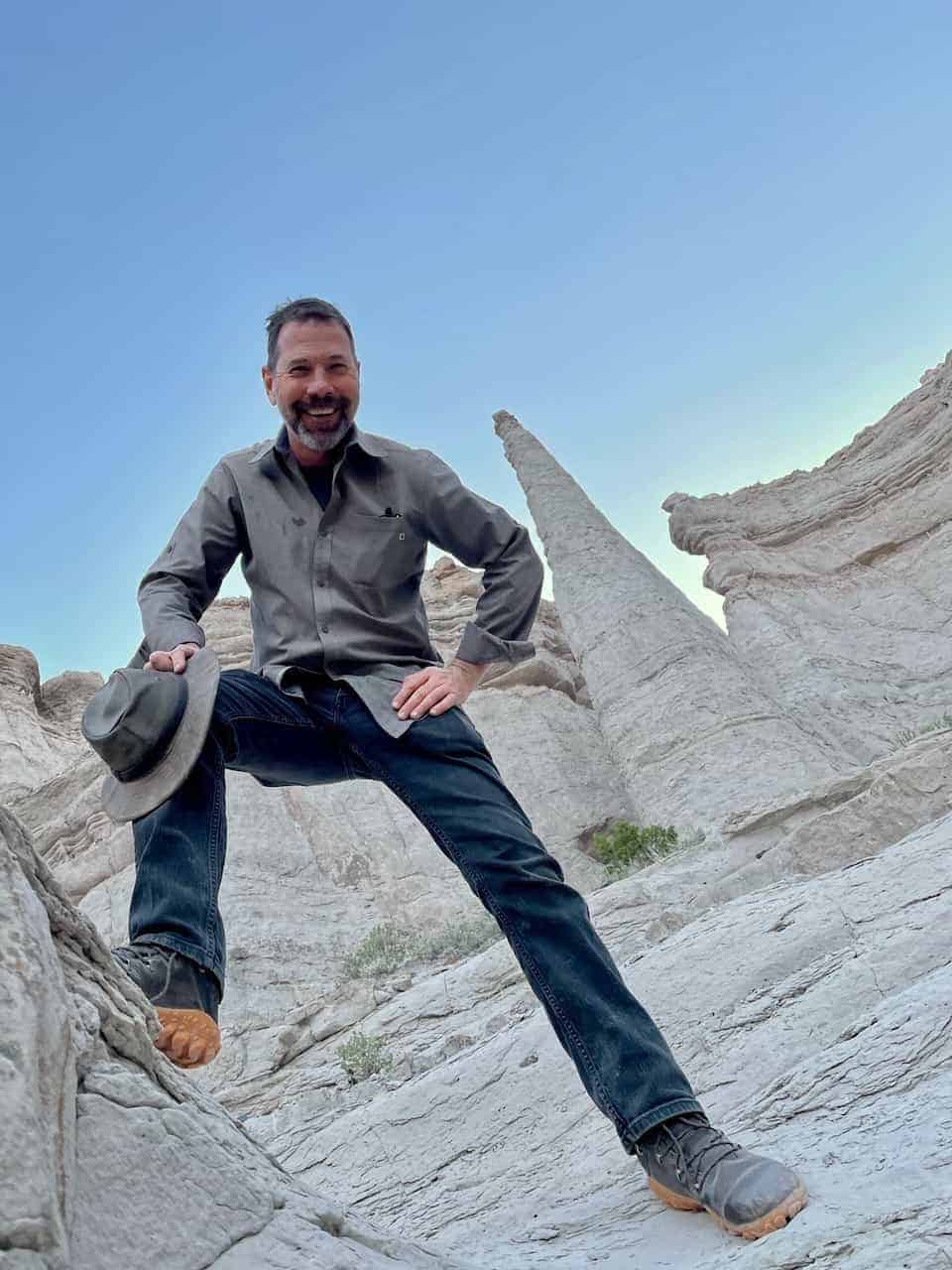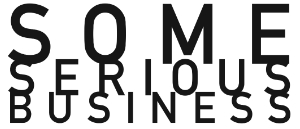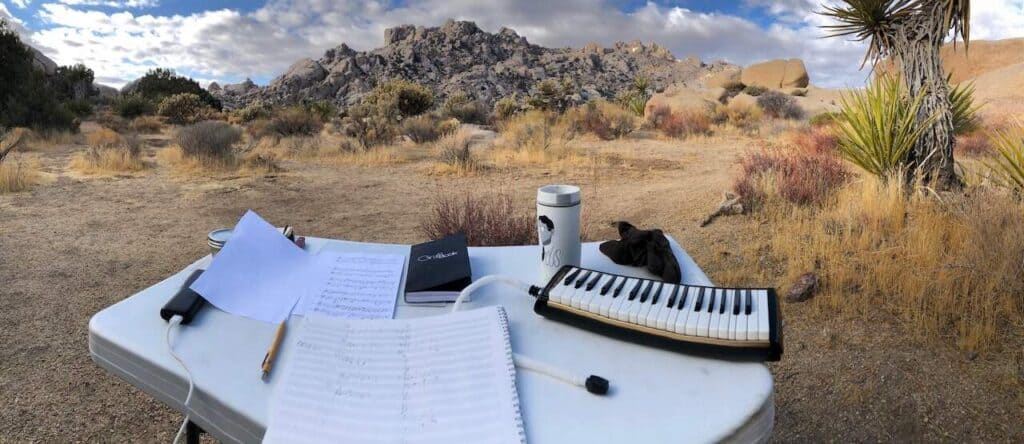Chris Jonas #FiftyQuestions
What event or factor in your life has been the most pivotal in your decision to become an artist?
As a child, I was super sensitive and struggled to find a place in society where I felt useful and seen. At age of 10, on the edge of a cliff near my home, where the erosion had created thousands of minuscule branching channels in the chalk, I had a moment where the exquisite complexity of the world became viscerally clear. In that moment I realized that the path of sharing that complexity was the only possible way for me. I embraced that space, perspective and identity which saved my life – and I have been devoted to it since.
What artist do you consider most influential to your ongoing development as an artist?
There are many artists who have touched me deeply, and one that comes to mind is composer and performer Anthony Braxton who I have worked with since 1989 and who exemplifies the creative artist for me. Braxton’s work creates new structures to experience the passing moments of life in fresh and relevant ways. He opened an aperture of possibilities and identities that formed a model of how to be an artist in the world.
What has been the most significant challenge you’ve faced that you overcame to continue your art practice?
The pressures and at times life diverting issue of income has long been my primary challenge. There’s a confounding balance that exists between the tensions of making what feels new and alive for me as an artist and what is stable enough to attract the interest of the people around me and therefore the income to sustain life. As a result, much of my life, I have lived in two parallel worlds – a day job and my creative practice. Recently, in part due to the fresh spaces that opened for me and for my audiences during the pandemic, my art making has actually began to generate more and more of my income improving this challenge quite a lot.
Describe your ideal workspace.
My life is full of distractions. Smart phones, meetings, opportunities, friends, responsibilities, communications. Therefore, I thrive creatively when I am away from all of that; I have found deeply fulfilling creativity and productivity when camping in the wintertime, in places like the deserts along the US Mexico border, where there’s no cell phone service, and ideally in places with no electricity or people.
What project of yours do you personally consider your most satisfying, and why – regardless of external support or accolades?
The hardest pieces that I have developed are the multi-arts, immersive, live performance of video and musical compositions of my GARDEN series. These pieces are performed in dark spaces with a moving and exploring audience. GARDEN’s evening long performances become their own things and when they do so, they soften the domains of artistic discipline and style such that they feel real, self-standing, beautiful.
How would you describe your ideal relationship with other artist colleagues?
A big part of me is that of a jazz musician. In this field, we are totally changed by the other musicians with whom we play; the music we make is totally embedded in the sound of others. Each musician has a different set of skills, sounds, languages they use, and they draw on that real time in response to the other sounds being produced at the moment. No one can anticipate what is going to happen and so has to be both contributing and responding during every moment of performance.
From this perspective, I find myself happiest with other artists who are confident enough that they can respond to the moment to moment rather than clutching to their own ideas and conceptions, contributing in real time, and easy with either leading or supporting. My favorite collaborators have artistic skills created from rigorous work in the past and have their own colors and odd affinities that add to the aggregate pieces we make together. Ideally we inspire one another, challenge one another, offer new pathways for one another. The collaboration takes place at the speed of the passing experience in art making and therefore resonates deeply with the current moment, containing identity, questions, heartbreak, beauty, being lost, quietude, sadness, inspiration, hope, connection.
What is your artistic relationship to loss? Either personal loss, or lost works of art, or other kinds of loss?
Loss is a fundamental part of life and therefore art making means little without it’s presence. With loss is yearning – and there can be a feeling of arrival and return when connection is found again. Loss brings openness. I am changeable when I feel loss. If I am changeable, I can make art.
When does Joy tend to visit you?
More often than not, joy exists when I am alone, tasks done, and some animation and bounce arrives. I walk and dance with it. I sing in it.
How has your years in artmaking affected or influenced your sense of self?
It has given me freedom to trust in the moment. To live with as little regret as possible. To show up and do my best. To let go of insecurity and just participate. Connect with others. Be curious. This is a great way of living daily life as well.
Have you ever had a physical illness, event, or impediment that has changed how you make or approach artmaking? And how?
Depression and anxiety tore my world up in 2015. The noise of it was crippling. The numbness of it removed all sense of connection and color in the world. And from the later departure of the anxiety and depression, my life became re-infused with joy, song, dance, bounce, color. The experience of those years left me profoundly grateful for the presence of these elements in my life; art making allows us to serve and explore them with others.
How do you feel most often misunderstood or misperceived, either as an artist or in your work itself?
I don’t worry about understanding. The art I make is for people to do with it what they want. I think about the components, orders, orchestration, logistics of sections, execution, craft of it. The audience members don’t need to think about those things unless that is what attracts them. But more often than not, they like it for their own reasons. I don’t ask anything else of them or the art itself.
How important is it to you that others connect and understand and appreciate your work?
It is deeply important to me that others experience the work I make. The connection is much of the magic that I seek to experience in making art. And I love the experience of having people enjoy what I share because it consists of things I love. But I don’t believe in or have much regard in “understanding.” I don’t actually know what “understanding” really is. And certainly, I don’t care at all about appreciation.
What is your relationship to criticism?
I want the things I make to work. To do so, my open-minded process of unspooling raw material needs to find form. Form to share. Criticism is a way to hone form to work better. To find structures for sharing that resonate, are solid, clear, and fresh enough such that the resulting art can be seen and heard without the self-consciousness and clunkiness of forms that don’t work. Criticism is a way to improve these techniques of the craft of art. But who and how criticism happens and its intent is deeply important. If it is from the outside, it feels like sniping. If it is from the inside, it can be very helpful.
What is your relationship to your audience, real or imaginary?
I love people. Human beings. I make my art to be with others. To connect. To contribute. It is satisfying to do so. I think I am more motivated by working in collaboration with others than I am presenting to passive audience members. That said without an audience, art making feels underpowered. But I certainly prefer an active audience.
Describe the greatest gift someone has given to you that invigorated your artistic expression?
The greatest gift I have received as an artist is the concept of disambiguation of the creative mind (open mind) and the critical, editing mind (closed mind). Instead of having these two states occur at the same moment of creative work, I have benefited enormously from using them at different times. This leaves the creative mind total freedom to make a whole lot of seemingly random but rich stuff (some of which is good, much of which can be left behind), but then later give the critical crafting mind its due, bringing the stuff to the surface by the creative mind and then editing it into forms that can be easily shared and with the greatest impact. Moments when the creative mind and the editing mind exist at the same time is like driving with the breaks on. Done at different times and there’s huge fluency and wonderful pieces that come from the process. This conception came from an Irish podcaster Blindboy and a poet friend, Sara Eddy who helped me with my first dull days in the desert in 2022.
Are you more interested in the universal or the individual? How important is it to you whether you express yourself as a unique person, or rather add your voice to a collective conversation?
None of those mean anything to me. I have no way of knowing what would universal mean nor do I understand what the word means. Same with the word individual. I suppose I am an individual but don’t know where that starts or stops or why it is important to determine anything individual versus something else. I don’t know what expression means or how to tell when it is there and when it isn’t. Nor do I understand or have any capability of assessing unique. I have no idea what a collective conversation would be or how to tell if that is what I am participating in.

